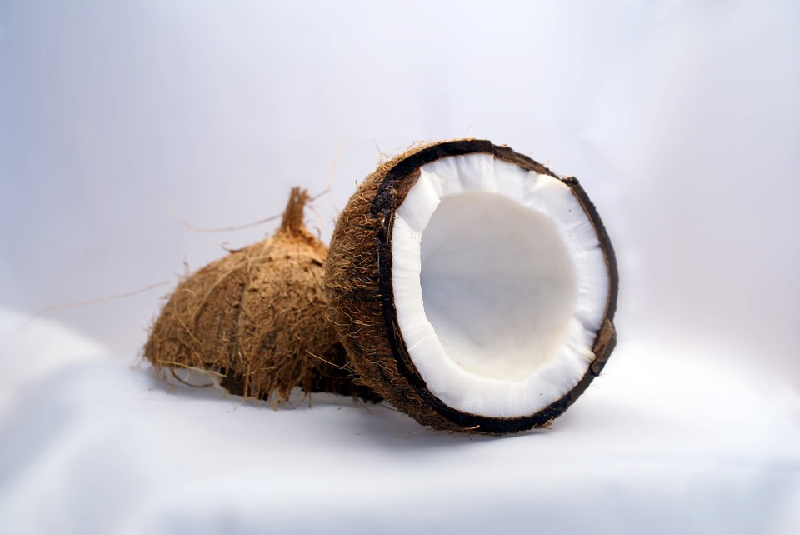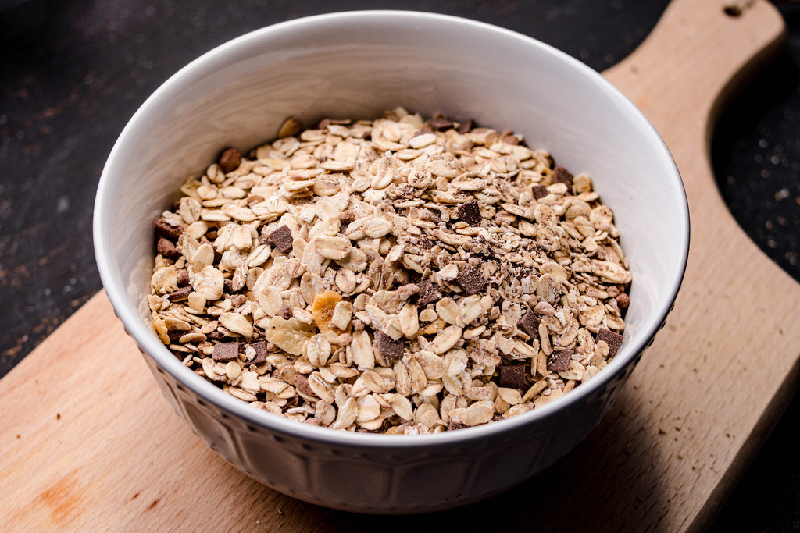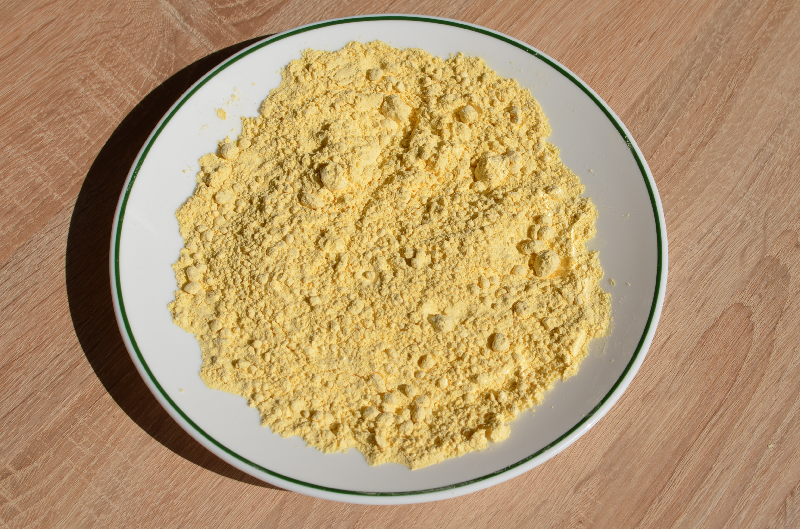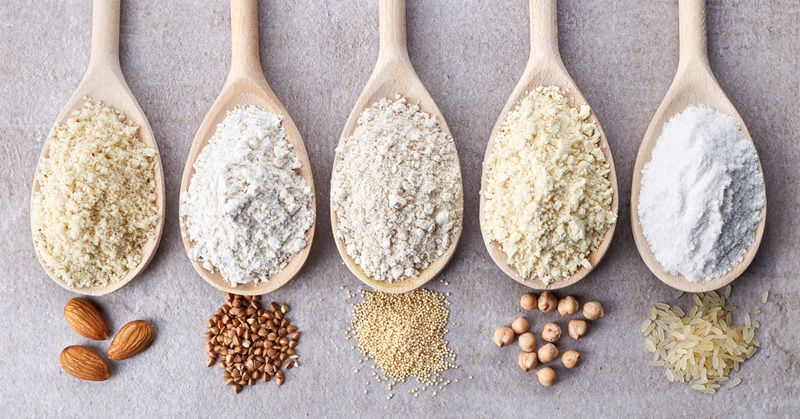White, wheat, and otherwise gluten-ridden flours can be problematic. Not only are white and wheat flours generally bleached, making them not good for you, but they contain gluten, too. Many people have an allergy to gluten, and it tends to be hard on your digestive system, as well. However, there are many gluten-free flours available, many of which are packed with nutrients.
Here are 12 gluten-free flours you should try:
1. Coconut Flour

For vegans, those on the Paleo diet, or a lower-carb diet, coconut flour is one of the best gluten-free flours you can choose. Furthermore, the health benefits of coconut flour are undeniable. It has a high amount of saturated fats, which the body can use easily for energy. (1)
Additionally, coconut flour promotes healthy blood sugar levels. Studies published in the British Journal of Nutrition demonstrated that consuming coconut flour supports stable blood sugar levels and lower the overall glycemic impact of food. (2)
Coconut flour also promotes heart health. Studies show, in fact, that this flour helps lower bad (LDL) cholesterol. (3) This is due to the soluble and insoluble dietary fiber present in coconut fiber, as well as the healthy MUFA fat content. (4)
2. Sprouted Flour
Sprouted flour, such as yellow-corn flour, is great for homemade cornbread. And when it comes to gluten-free flours, sprouting is a good way to go to add extra benefits.
Sprouting is the process of taking a grain and soaking it, usually for 12 to 48 hours. That kills the phytic acid, which is what binds to minerals and keeps you from absorbing minerals present in the grain.
Furthermore, sprouting grains makes breads easier to digest, which can prevent extra belly fat as well as ward off leaky gut syndrome.
3. Oat Flour

Many people question whether or not oats are gluten-free. It depends on what kind of oats you get. If they’re natural, non-contaminated oats, they are gluten-free. The problem is when they’re cross-contaminated in their fields.
However, certain oats are gluten-free, and can be turned into gluten-free flours. And oats help lower cholesterol, provide fiber as well as increase immunity. (6,7,8)
4. Rice Flour
Brown rice flour is also on the list of gluten-free flours. Rice tends to be non-allergenic, and brown rice pasta is one of the closest matches to traditional wheat pasta. Prefer, when you can, brown rice over white rice. This is because conversion of brown rice into white rice destroys a lot of rice’s nutrients.
5. Almond Flour
Next on the list of gluten-free flours is the nutritious almond flour. Almonds contain L-arginine, magnesium, copper, manganese, calcium and potassium. Furthermore, studies show that almonds are useful in lowering LDL cholesterol. (9)
Almonds are also high in fiber and contain healthy fats. And almond flour is great for baking—use it in cookies, cakes, and other baked goods.
6. Tapioca Flour
Tapioca is a pure starch, and is in fact one of the purest forms of starch there is. And tapioca flour is great for to use as a thickening agent, although cassava flour is probably the better option. It contains more vitamin C and is less processed.
7. Chickpea Flour

Chickpea flour is next on the list of gluten-free flours. Chickpeas, which are a member of the legume family, provide a great deal of fiber, which helps with digestion as well as promotes weight loss.
Furthermore, chickpea flour has what many experts call the perfect ratio of magnesium, calcium and B vitamins. It also has a large amount of folate, making it a great option for pregnant women. (10)
8. Sorghum Flour
When it comes to gluten-free flours, sorghum works best in small amounts, or in combination with other gluten-free flours. You may be wondering, why use it at all? It’s loaded with nutrients, is why, such as high amoutns of fiber as well as antioxidants. Furthermore, sorghum contains tannins that may help fight obesity. (11)
9. Cassava Flour
Cassava flour is also a great gluten-free choice. It contains 71 percent of your daily needs for vitamin C. That being the case, it can help promote healthy skin, fight damage from free radicals, and also improve the health of your gums and teeth.
10. Amaranth Flour
Amaranth wears multiple hats in the diet realm. For example, you can eat the leaf, the grain as a cereal, or use it as a flour. The flour has a nutty, earthy flavor, which can easily absorb flavors of other ingredients.
Moreover, amaranth boasts a variety of health benefits. It can help fight diabetes, supports bone health, and provides the body with protein. (15, 16) It also has folate, making it another good option for pregnant women.
11. Buckwheat Flour
Despite its misleading name, buckwheat does not contain any wheat and it is gluten-free. It’s also full of antioxidants and nutrients such as B vitamins, manganese, magnesium, zinc, iron and folate. Buckwheat can help reduce cholesterol and blood pressure levels. It also fights diseases and improves digestion. (12, 13, 14, 15)
12. Teff Flour
This is the world’s smallest grain. It’s also gluten-free, high in iron, phosphorus, B vitamins, calcium, and other minerals. And teff flour may promote healthy circulation, improve symptoms of PMS, boost your immunity, and support heart and bone health as well. (16)
Teff flour, however, can make baked goods dry and course. It’s best if you use it with other flours that are gluten-free.


